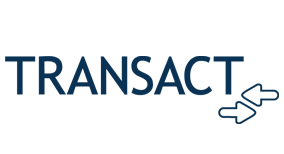
An E&I 2-Minute Read, Featuring AmEx and Transact Campus
Meeting Gen Z Expectations with Modern Payment Systems
2025
A 2-Minute Read Featuring E&I Contract Partners, AmEx and Transact Campus
Siloed, legacy payment systems in higher education absorb valuable resources and cloud financial visibility. And as higher education institutions face increasing financial pressures and evolving student expectations, the PYMNTS Intelligence report by AmEx explores how unified commerce systems can transform campus payment experiences. The report highlights the inefficiencies of legacy systems, the preferences of Gen Z students, and the strategic advantages of modernizing payment infrastructure.

Many colleges and universities still rely on siloed, outdated payment systems that fragment financial data and complicate operations. These legacy systems contribute to significant resource drain and poor financial visibility. At the end of 2023, 72% of U.S. institutions had over $1 million in outstanding accounts receivable (AR), and one-third exceeded $5 million. Only 1% had less than $100,000 in overdue tuition and fees.
A major contributor to this issue is the manual nature of legacy AR systems. 74% of higher education officials spend up to half their time recovering delinquent tuition, with 42% deploying 10 or more staff members for this task. These efforts often rely on phone calls and emails, diverting personnel from core educational missions and allowing at-risk accounts to slip through the cracks.
The lack of a centralized financial data system further hampers collection efforts. Without unified visibility into student accounts, institutions struggle to identify who owes what and where they are in the outreach process. This fragmentation delays strategic decisions and weakens financial planning.
Modernizing AR systems can significantly improve outcomes. For example, St. Edward’s University recovered 47% of its outstanding tuition balances—about $520,000—after upgrading its AR system. Automation and integration with student information systems allow institutions to track and settle accounts more efficiently, freeing up human capital and stabilizing cash flow.
See the full report by AmEx - Modernizing Higher Education Payments: The Case for Unified Commerce
E&I Contract with AmEx
The American Express contract helps institutions of all sizes create a customized payment program that saves costs, creates efficiencies through automation, improves institutional cash flow, and generates financial benefits that are calculated using the aggregate volume of all participating E&I members. The entire suite of American Express B2B Services is available at exclusive pre-negotiated rates.
See your E&I contract with AmEx

Meeting Gen Z Expectations with Modern Payment Systems
Gen Z students, who are digital natives, expect seamless, mobile-first financial experiences. Legacy systems not only frustrate students but also delay payments. A Transact Campus study found that 71% of students would pay tuition more promptly if offered modern digital payment options, and 68% said mobile-first systems would reduce stress and improve financial management.
A recent higher ed survey with students revealed that three in four undergraduates experience stress due to fragmented payment systems. Key stressors include ambiguous processes (25%), lack of convenient options (21%), and too many choices (14%).
Unified commerce systems offer a solution by providing consistent, user-friendly payment experiences across tuition, housing, meal plans, and more. These systems reduce friction, build trust, and help institutions maintain balanced AR books.
Importantly, 72% of students believe payment experience should be a key metric in college rankings. This underscores the growing importance of financial UX in shaping institutional reputation and student satisfaction. By adopting unified systems, colleges can enhance their standing in student experience rankings.
E&I Contract with Transact Campus
Transact Campus + CBORD delivers comprehensive higher education solutions including Integrated Payments (processing, tuition, plans, billing, eMarket), Campus ID (mobile credential, meal plans, door access), and Campus Commerce (cloud POS, mobile ordering, hardware), with direct ERP integration. It provides campus technology ecosystems, like integrated payments, campus ID, campus commerce and Quickcharge.
See your E&I contract with Transact Campus
Unified Commerce is a Win-Win
From the institutional perspective, unified commerce simplifies the management of diverse payment types and volumes. It enhances operational efficiency and provides data-driven insights critical for growth and retention. For students and families, it offers a cohesive experience by integrating all payment functions—tuition, housing, dining—into a single platform.
AmEx notes that unifying legacy systems doesn’t have to be an all-at-once overhaul. Institutions can choose between rapid or phased transitions depending on their infrastructure and goals. A full implementation typically takes six to 18 months, and success depends on strong partnerships and strategic planning.
Transact Campus supports institutions through onboarding, data management, and continuous collaboration, aiming to minimize disruption and tailor solutions to each campus’s needs. The benefits extend to vendors as well, who gain from streamlined interactions and reduced complexity. Unified commerce enhances not just financial operations but the entire campus ecosystem, aligning institutional goals with student expectations.
See the full report by AmEx - Modernizing Higher Education Payments: The Case for Unified Commerce

Why Members Work With E&I?
6,000+
U.S. member institutions, universities, and K-12
200+
Member solicited buying
contracts you can access
$3B+
Yearly spend of E&I members
means large savings for you

Key Trends in Higher Education Procurement
The National Association of Educational Procurement (NAEP) surveyed chief procurement officers, chief business officers, and higher education procurement managers or directors about their top focus areas. Budgets are shrinking, and educational institutions are forced to examine cost-cutting measures wherever possible. With budget deficits, enrollment decline, and an end to pandemic relief funds, many schools are cutting programs and services. Procurement teams are under pressure to reduce costs. This E&I article discusses a few key trends, and ways education procurement is evolving in 2024.



